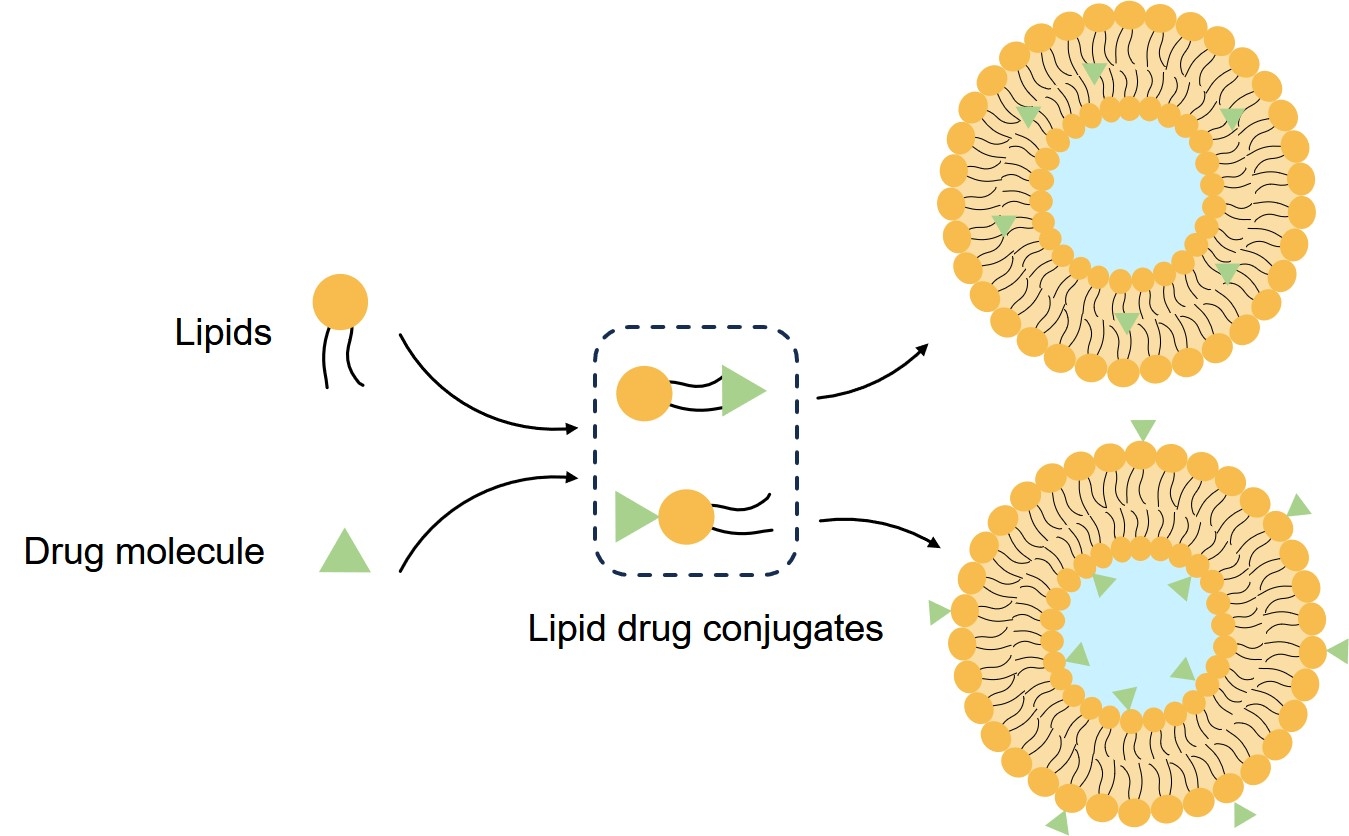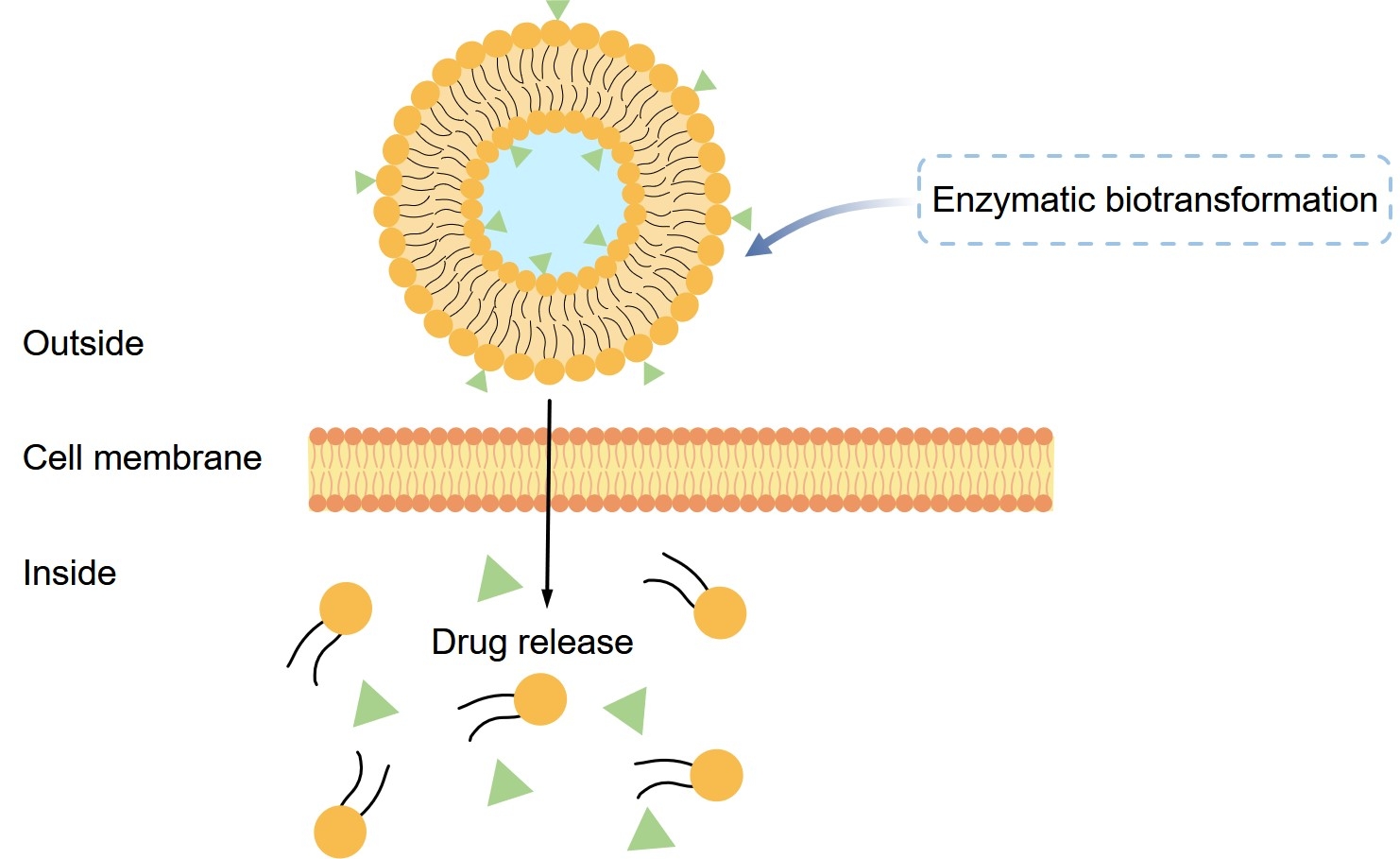Lipid-drug conjugates are a class of nano-sized lipid particles that have received increased attention in biomedical and pharmaceutical applications. Creative Biolabs is a leading service provider that focuses on lipid-based drug delivery system with our state-of-the-art nanotechnology and profound expertise.
Lipid drug conjugates, also known as lipoidal prodrugs, are pharmaceutical drugs chemically bound to/with lipid moieties like fatty acids or phospholipids and thereby have better therapeutic effects. Lipid drug conjugates system is a kind of nanostructured lipid carrier that was reported as early as the late 1990s. Plenty of experiments indicate that lipids matrix that make up constituting the conjugations can be various fatty acids, acylglycerols/glycerides, waxes, biological membrane derived lipids and even surfactants. The formation of lipid drug conjugates is generally realized by drug moieties covalently (such as ester or ethers bond, amide linkage) or non-covalently (such as salt formation) binding with these different lipids. Such lipids conjugations can and significantly enhances the oral bioavailability of the drug and is loaded into the hydrophobic component of the delivery carriers.
 Fig.1 Lipid drug conjugate for enhancing drug delivery.
Fig.1 Lipid drug conjugate for enhancing drug delivery.
Lipid drug conjugates are generally prepared by lipid-conjugation and other processes same as other lipid nanoparticles. The active targeting of lipid drug conjugates can be achieved via surface decoration with antibodies, peptides or folic acids. Drug release from lipid drug conjugates formulations usually involves two processes: first, releasing the conjugates from the nanoparticle and then releasing the drug from lipid drug conjugates. During these procedures, the conjugates is primarily released by diffusion and erosion, while drug release is determined to chemical cleavage of conjugates by the enzymes as well as also associated with the pH of the body fluid and targeted sites. The released conjugates can be easily recognized and fused with membranes of targeted cells, subsequently, the drug cleavages and gets released into cells to exert their effect.
 Fig.2 Drug release from lipid drug conjugates (LDC) nanoparticle.
Fig.2 Drug release from lipid drug conjugates (LDC) nanoparticle.
The conjugation of lipids to drug molecules forms lipid drug conjugates, a novel lipid nanoparticle system, with increased lipophilicity and also other properties, such as:
Lipid drug conjugates is an emerging nano-scale drug delivery system which has potential applications in the delivery of drugs and targeting them to a specific site, especially for these water-soluble/hydrophilic drug moieties. With extensive well-constructed platforms and a team of pharmaceutical professionals, Creative Biolabs is committed to providing our global clients with the best and customized services, including but not limited to:
We believe that our high-quality services will help you get through many thorny issues of novel drug delivery formulations. Please feel free to contact us for more details.
 For Research Use Only. Not For Clinical Use
For Research Use Only. Not For Clinical UseSupports
Online Inquiry

